Mastering the Art of Opening Stuck Jar Lids
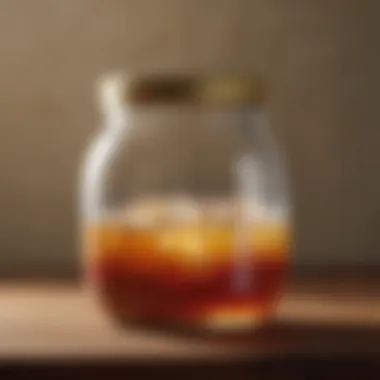

Intro
The issue of opening stuck jar lids is more common than one might expect. This challenge can manifest itself in various settings, often leading to irritation among users. Understanding the underlying reasons why jar lids become sealed tight is crucial. This article aims to explore effective methods and techniques to release these stubborn lids without causing damage to the jars or their contents.
Recipe Overview
- Brief description of the dish: This guide outlines practical approaches to tackle the problem of opening jar lids that refuse to budge. Aimed at enhancing the experience in the kitchen, the techniques discussed provide efficient resolutions for all skill levels.
Common Causes of Stuck Jar Lids
Several factors contribute to the difficulty of opening jar lids. Understanding these reasons can help in selecting the right approach to tackle the problem.
- Vacuum seals: When jars are sealed properly, vacuum pressure can keep lids in place.
- Food residue: Dried food particles can create an additional bond, making the lid harder to twist open.
- Temperature changes: Temperature fluctuations may cause expansion or contraction, causing lids to become stuck.
Effective Methods to Open Stuck Jar Lids
There are several practical techniques to open stuck jars. Below are a few effective strategies.
Physical Methods
- Rubber Grip Tools:
Using items like rubber gloves or silicone jar openers can provide additional grip. - Hot Water Soak:
Submerging the jar lid under hot water for a couple of minutes can help loosen the seal. - Tap the Lid:
Gently tapping around the lid with a wooden spoon can break any food residue or vacuum seal causing the issue.
Thermal Methods
Thermal expansion can help release stuck lids. Here are some commonly used strategies:
- Heating a Jar Lid:
Apply heat using a hairdryer or hot cloth to the lid, allowing it to expand slightly away from the jar. - Cold Glass Jar Method:
Place the entire jar in cold water while heating just the lid. This creates a pressure differential, which can make it easier to open.
Preventive Measures
To avoid future frustrations with stuck lids, consider implementing the following preventive strategies:
- Clean the Lid and Jar Neck:
After using jars, make sure to clean the rim and the underside of the lid to prevent food residual buildup. - Use Wax Paper or Foil:
Placing a small piece between the lid and the jar while sealing can help create a barrier that reduces vacuum lock.
Keeping lids clean and using appropriate sealing methods can help minimize the issue of being unable to open jars.
End
Opening stuck jar lids does not have to be an insurmountable problem. By utilizing the methods discussed, one can effectively navigate this issue and reduce frustration in the kitchen. With a bit of technique and understanding, these simple household solutions can make a significant difference. Mastering the art of jar opening minimizes unnecessary waste and enhances one’s culinary experience.
Understanding the Problem
Opening a stuck jar lid is a scenario many individuals encounter frequently. This commonplace issue highlights several underlying reasons and mechanisms that lead to jars becoming challenging to open. Understanding why lids get stuck is critical for finding effective solutions and preventing future frustrations.
When we talk about stuck jar lids, we need to consider factors like air pressure, temperature changes, and the materials involved. Air can create a vacuum seal inside the jar, making it difficult to release the lid. Additionally, the effect of humidity and temperature can cause the lid to expand or contract, further complicating the opening process. Also, the act of sealing often involves using considerable force, which can lead to lids becoming increasingly tight over time.
Why Lids Get Stuck
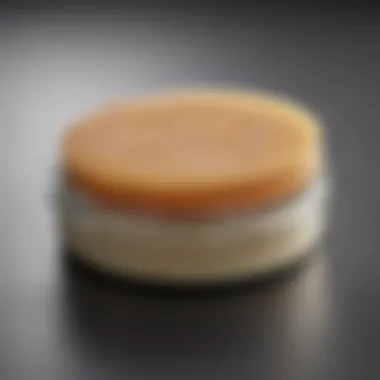
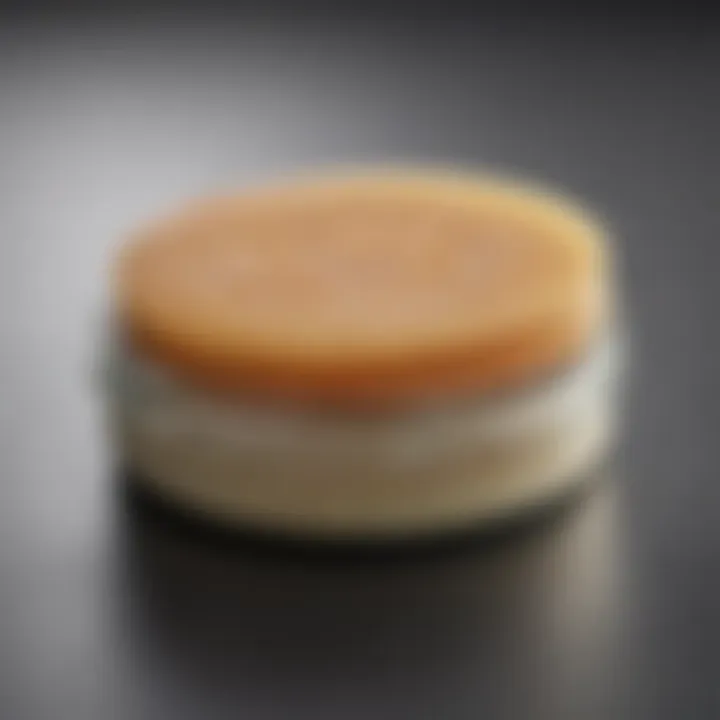
Multiple reasons cause lids to become stuck, and being aware of these can provide insight into effective strategies for opening them. One primary reason is the design of the jar and lid. Many jars have a threaded neck that allows the lid to seal tightly, and when combined with pressure changes, the lid may bond with the jar.
The material of the lid also plays a vital role. Metal lids tend to rust or corrode, which can lead to a lack of smoothness and increased friction when trying to open. Glass jars, on the other hand, can be more forgiving; however, they can chip or crack if excessive force is applied.
Furthermore, another critical aspect is user behavior. Over-tightening lids after use can create an unnecessary problem. Many people have a tendency to secure lids too tightly, which leads to a tight seal that can become a headache during meal prep.
Common Types of Jar Seals
Understanding the types of jar seals is equally important in addressing the issue of stuck lids. There are primarily two categories: vacuum seals and screw-top seals.
- Vacuum Seals: Commonly found in jars for canning, these lids create a strong seal by removing air. The vacuum effect can make it particularly difficult to open the jar once sealed.
- Screw-top Seals: Typically used for commercial products, these lids have a more straightforward threading mechanism. Despite their convenience, they can also become stuck over time due to tight sealing or temperature variances.
Recognizing the seal type can influence the method to use for opening. Moreover, physical characteristics like the size and shape of the jar can also affect how easily a lid can be opened.
Understanding these challenges forms the basis for exploring effective strategies to release stuck jar lids. The problem is not merely an inconvenience—it can be a significant barrier in the kitchen. The next sections will delve deeper into practical methods that can facilitate a smoother opening experience.
Assessing the Jar and Lid
Assessing the jar and lid is crucial when dealing with stuck jars. Each jar has its unique characteristics. Understanding these characteristics can help in selecting the right strategy for opening it. Many people often overlook this aspect. However, knowing the jar's material and the lid's condition can save time and avoid damage to both the jar and its contents.
Identifying Jar Material
Jar materials can vary widely. Common materials include glass, plastic, and metal. Each type reacts differently to various methods intended to loosen stuck lids. For instance, glass jars are sturdy but can be slippery, making them difficult to grip when lids are stuck. Plastic jars might warp if excessive heat is applied. Metal jars are often more resistant, yet their lids can corrode over time.
Being aware of these differences enables better decision-making when selecting a technique. For example, using a heat method on a plastic container might lead to deformation, whereas the same method works efficiently on glass. Therefore, always assess what material you are dealing with to choose a fitting approach for opening the lid.
Examining the Lid's Condition
The condition of the lid plays a significant role in its ability to be opened. Observing the lid can reveal signs of wear, rust, or bending. A rusted lid often indicates that it has been sealed for a long time, making it harder to open. Additionally, if the lid is bent or damaged, it may not seal properly, leading to leakage if opened incorrectly.
By closely examining the lid's surface, you can identify any irregularities that might impact its removal. A clean lid is generally easier to grip. If the lid appears sticky or grimy, cleaning it can enhance grip and ensure safer handling during the opening process. It's not just about getting it open; it's also about doing so in a way that preserves the jar and its contents.
"Understanding the jar and lid's material and condition significantly influences the selection of the most effective opening techniques."
Taking time to assess these factors will lead you to the most effective strategies for releasing a stuck jar lid. Knowing the material and examining the lid's state promotes a strategic approach that saves effort and lowers the risk of accidents.
Physical Methods for Opening Jars
In the realm of culinary activities, the moment of confronting a stuck jar lid presents a unique challenge. These situations demand effective strategies that prioritize practicality and efficiency. Physical methods are foundational to solving this problem. They often involve basic tools and techniques found around the kitchen, making them accessible for everyone.
Employing physical methods not only addresses the immediate task of opening jars but also encourages confidence in one's cooking abilities. Most importantly, these methods minimize the risk of damaging the jar or its contents, which can occur with more aggressive approaches. Understanding the various techniques available is essential for anyone keen on maintaining their kitchen tools and ingredients in prime condition.
Using Hand Strength
Relying on hand strength is often the first go-to method for many when faced with a stubborn jar lid. This strategy is straightforward and requires no additional tools. It emphasizes the importance of a firm grip and a twisting motion to break the seal.
- Technique: Start by ensuring your hands are dry to maximize grip. Wrap your fingers around the lid, applying pressure evenly. Twist counterclockwise while exerting a steady force. If necessary, alternate between tightening and loosening your grip to adjust.
- Considerations: Ensure your wrists and hands are in a healthy condition. If pain or discomfort arises, it may indicate that a different method is more appropriate.
Employing Rubber Grips


Rubber grips can significantly enhance the effectiveness of hand strength. This technique is particularly beneficial for those with limited grip strength or arthritis. Using rubber grips provides an additional layer of friction between your hands and the lid, which allows for better control.
- Common Tools: Common items like rubber jar openers or even simple rubber bands can be used.
- Application: Position the rubber grip on the lid and apply a twisting motion. This increases the surface area of your grip, providing additional leverage.
Utilizing a Spoon or Knife
Another practical method involves the use of a spoon or knife, particularly for jars that are sealed tightly. This approach focuses on creating leverage to break the seal without incurring damage.
- How to Do It: Take a spoon (or a blunt knife) and insert the tip between the jar and the lid. Gently apply pressure upwards to lift the lid slightly. This should break the vacuum seal or push air inside, making it easier to turn.
- Precautions: Exercise caution when using sharp tools to avoid accidents or damaging the jar. Ensure you do not apply excessive force, as this may lead to breakage.
Leveraging a Jar Opener
Jar openers provide a technical solution for those who desire assistance from tools specifically designed for this purpose. Various models are available, and they can save time and energy.
- Types of Jar Openers: There are manual and electric options, each catering to different user needs.
- Usage: Place the jar opener around the lid, adjust for a snug fit, and either twist or lever to release the seal. Manuals usually require some effort, while electric models will handle the task at the push of a button.
Thermal Methods for Jar Lid Release
In the realm of techniques for opening stuck jar lids, thermal methods stand out for their effectiveness. This approach utilizes temperature changes to affect the materials involved, making it easier to break the seal between the lid and the jar. Understanding how heat can help is important for anyone who regularly handles jars in the kitchen. Using thermal methods tends to be convenient and requires no specialized tools, simply leveraging everyday items at home.
Many jars are sealed tightly. This tightness is often caused by the jar contents, the material of the lid, and temperature variations. When the lid is exposed to heat, it can expand. This expansion allows for a slight separation from the jar, making the lid easier to twist off. However, it is crucial to handle these methods with care to avoid burns and ensure the integrity of the jar.
Applying Hot Water
One of the simplest and most effective ways to release a stuck lid is by submerging the jar in hot water. When using this method, it is essential to take a few steps to ensure effectiveness while minimizing risks.
- Boil Water: Start by heating water to a boil. Make sure the water is not just warm but hot enough to create the necessary thermal change in the lid material.
- Submerge the Jar: Turn off the heat and carefully place the jar in the hot water, ensuring the lid is fully submerged. Be mindful of the jar's material; glass jars tolerate heat well, while some plastic jars may deform.
- Let it Sit: Allow the jar to sit in the water for about 5 to 10 minutes. This time enables the heat to transfer to the lid, aiding in expansion.
- Check the Lid: After the time has elapsed, remove the jar from the water (using a towel or tongs) and dry it. Attempt to open the lid. If it resists, repeat the process, as sometimes more heat is needed.
This method is highly recommended, as it is straightforward and effective for various types of jar lids. However, always consider the material of the jar to avoid causing any damage.
Using Heat from a Hair Dryer
Another feasible thermal method is using a hair dryer to direct heat onto the jar lid. This method offers precision and control over the area being heated, thus reducing the risk of damaging the jar.
- Set the Hair Dryer: Plug in the hair dryer and set it to a high heat setting. Ensure that it is capable of producing concentrated heat.
- Direct Heat to the Lid: Hold the dryer a few inches away from the lid. Move it around to evenly distribute the heat rather than concentrating it in one spot. Try to avoid direct heating for too long to prevent any potential melting or damage.
- Test the Lid: After a few seconds of heat application, try twisting the lid again. If it does not budge, continue applying heat for short intervals, checking occasionally for movement.
Heat from a hair dryer is beneficial because it can be easily controlled and targeted. Yet, caution is necessary to avoid burns or overheating the jar that might cause fractures in glass containers.
In summary, thermal methods, whether applying hot water or using a hair dryer, offer practical solutions for opening stuck jar lids. By understanding these techniques and executing them carefully, you can save time and frustration in your kitchen.
These methods not only highlight the use of everyday items in creative ways but also empower users by providing efficient solutions to a common household challenge. In the next section, we will explore chemical solutions that can further ease the task of releasing stuck jar lids.
Chemical Solutions for Stuck Lids
When faced with stubborn jar lids, chemical solutions can offer a practical and effective path to success. These methods often require minimal effort and resources, making them an appealing option for many individuals. Whereas physical and thermal methods require more manual exertion or equipment, chemical solutions can be simpler and more convenient.
Using substances commonly found in kitchens, like cooking oil and vinegar, allows for versatility in addressing the issue of stuck lids. Both options work by penetrating the small gaps between the lid and the jar, reducing friction and adhesion, thereby enabling the lid to turn more freely. Additionally, they are less likely to damage the jar or lid than more aggressive mechanical practices. Thus, incorporating these techniques not only simplifies the process but also preserves the integrity of the containers.
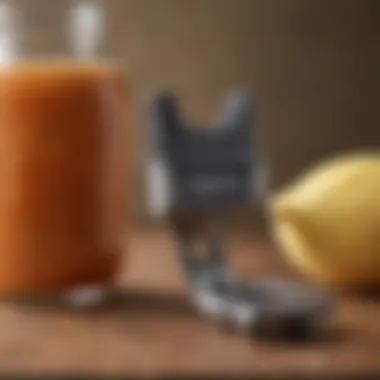
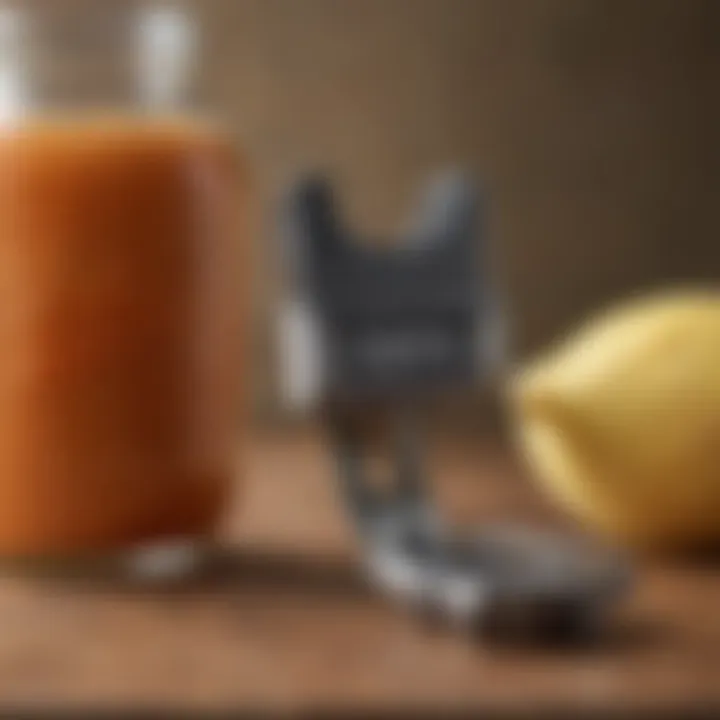
Applying Cooking Oil
When considering cooking oil, it can function as an effective lubricant for stuck jar lids. The oil seeps into the threads and around the rim, effectively breaking down any build-up that may be contributing to the seal's stubbornness. To apply this method, simply follow these steps:
- Select an Oil: Choose any common cooking oil such as vegetable oil, canola oil, or olive oil.
- Apply Sparingly: Using your finger or a cotton swab, apply a small amount of oil around the edge of the lid, ensuring it coats the lid but does not spill over excessively.
- Let it Sit: Allow the oil to seep in for a few minutes. Patience is necessary; the oil requires time to break down the hold.
- Attempt to Open: With the added lubrication, attempt to turn the lid again.
This method is not only easy but also relatively messy-free. Just take care to clean any excess oil off the lid afterward to avoid slipping for the next time.
Using Vinegar
Vinegar serves as another effective solution. Its acidic nature can assist in breaking down any residues or food particles that may be present between the lid and jar. It can be particularly useful when dealing with jars that have had food products stored in them. To implement this solution:
- Gather Supplies: You will need white vinegar or apple cider vinegar, depending on what you have available.
- Soak a Cloth: Dampen a cloth or paper towel with the vinegar, making sure it is not dripping.
- Wrap the Lid: Carefully wrap the cloth around the stuck lid and allow it to rest for about five to ten minutes. The vinegar's ability to penetrate will do the work of loosening the hold.
- Try to Open: After soaking, attempt to turn the lid again. The residue that may have been hindering the lid's movement should be diminished.
Both cooking oil and vinegar provide straightforward and efficient chemical solutions for stuck lids. By integrating these methods into your approach, you can expand your arsenal and enhance your confidence in the kitchen.
Preventive Measures
Opening a stuck jar lid can be easily prevented by taking simple precautions. When one understands how to avoid future sticking problems, they not only save time but also reduce potential frustration. Preventive measures focus on proper sealing and mindful techniques to ensure jar lids can easily be removed when needed.
Proper Sealing Techniques
A crucial aspect of keeping jars easy to open lies in how they are sealed initially. When sealing jars, especially homemade preserves or pickles, ensure lids are not excessively forced down. Tightly sealed jars can be suitable for storage, but they also increase the chance of future difficulty in opening.
One effective method is to clean the rim of the jar before sealing it. Any leftover food residues can create a barrier when torquing the lid. Furthermore, consider the temperature of both the lid and jar during sealing. Using lids at room temperature can help prevent the formation of a vacuum that makes them harder to open later.
"Applying the right sealing pressure helps maintain jar integrity while keeping lids easier to open."
Additionally, it is important to use the right type of lid for the jar. Some lids have different sealing mechanisms, and being aware of these can guide the proper approach for sealing.
Avoiding Over-tightening
Another significant factor in keeping jar lids functional is avoiding over-tightening. It may appear logical to fasten lids as securely as possible, but this can create unnecessary complications. This pressure can cause the metal of the lid to warp or the glass jar to distort, making future openings very challenging.
When closing a jar, aim for snug, not overly tight. If using a power tool or machine, ensure its settings accommodate for softness while sealing. If a lid is still too loose, it can be easily tightened with a gentle twist, rather than forcing it shut.
In settings such as canning or food storage, taking care not to over-tighten can encourage a better seal without making it difficult to open later. Recognizing this balance is key for anyone looking to maintain a hassle-free kitchen experience.
Closure
The conclusion of this article serves as an essential summary of the strategies discussed throughout. It is crucial to appreciate that opening stuck jar lids can often be a source of irritation for many. Understanding the methods available to solve this problem not only streamlines your cooking activities but also enhances your overall kitchen experience. It reflects a blend of practicality with helpful tools and techniques.
Summary of Techniques
Throughout the article, various techniques have been detailed, providing readers with a toolkit for addressing their jar lid frustrations. The physical methods such as using hand strength, rubber grips, or specialized jar openers demonstrate that often, simple solutions can be effective. Additionally, the thermal methods showcase how applying heat can aid in releasing tough seals.
- Physical Techniques: Used hand strength, rubber grips, and kitchen tools like spoons.
- Thermal Methods: Hot water and hair dryers can work with heat.
- Chemical Solutions: Cooking oil and vinegar have practical benefits, softening seals for easier opening.
Each of these categories offers a range of tactics that can be tailored to the specifics of each jar and seal encountered.
Final Recommendations
- Practice Correct Sealing: Ensure your lids are sealed adequately but not overly tight.
- Right Tools: Invest in reliable jar openers to make things easier.
- Learn the Types of Lids: Understanding both metal and plastic seals can guide your method selection.
By integrating these insights and methods into your kitchen routine, you can minimize disruptions caused by stuck lids, leading to a more enjoyable cooking experience.







